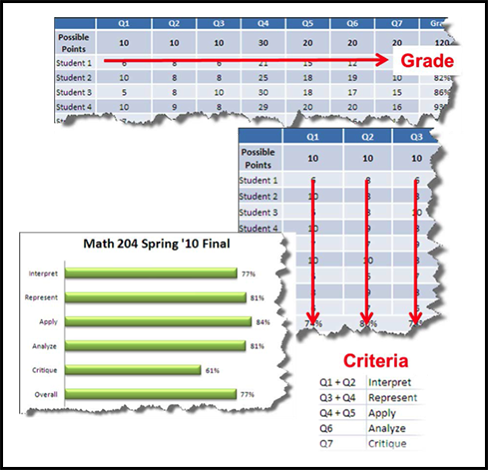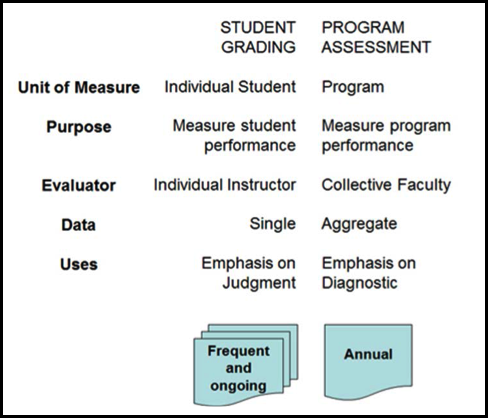Assessment is what we do in order to identify strengths and weaknesses within a program. This is conducted by using student assignments to tell us if we are upholding our promise to develop the knowledge and skills we promised the students the program would deliver. This allows for continuous programmatic improvement via the continuous improvement cycle. Below maps out a diagram of what assessment process and the continuous improvement cycle look like.
The diagram indicates 4 main reinforcing elements of the continuous improvement process:
- Identifying program learning goals and objectives
- Measuring student learning objectives
- Reviewing and Analyzing results / Discussing action items for any necessary improvements
- Implement action items and track for effectiveness

ASSESSMENT: WHAT IT IS NOT!
Confusion surrounding the issue of grading versus assessment has contributed to inaccurate data gathering that provided information of little use when evaluating learning outcomes for programs as a whole. Faculty and administrators often used grading and assessment interchangeably. As a result, it was important to dispel this misunderstanding. Establishing a clear different between grading and assessment was important to gathering meaningful data.
In brief, grading consists of the score the student receives based on a set of criteria. Contrastingly, assessment consist of looking at data from only ONE element of the entire sent of criteria making up the student’s grade and aggregating that particular score across a number of students to get an understanding of student proficiency on a particular learning objective.
For example, a capstone project may include a research paper, data analysis and an oral presentation. The student’s grade will consist of the score of all three components combined. Assessment on a particular learning objective, let’s use written communication for this example, will consist of:
- Collecting the research paper component of the project across a sample of students,
- Assessing (not grading!) the component using a tool of measurement, such as a rubric
- Gathering/analyzing the data for levels of proficiency on a particular knowledge/skill
- Determining how to improve the program if proficiency levels are low.
- ACT!
Assignment Grades vs. Program Assessment

